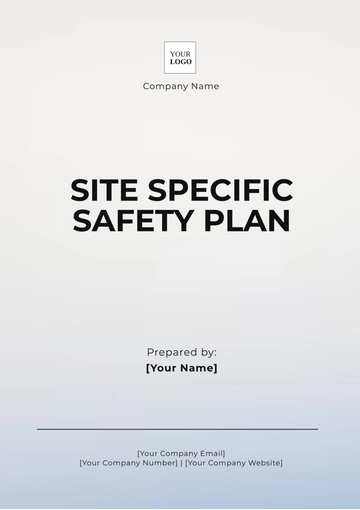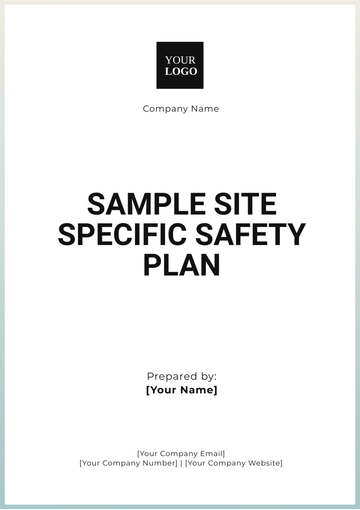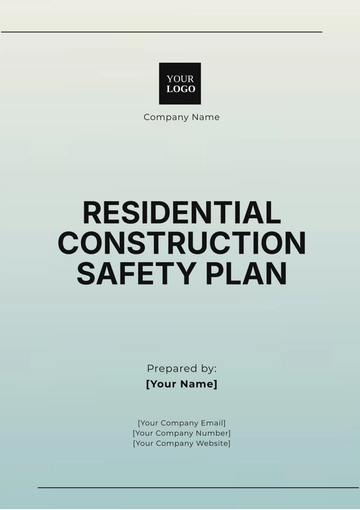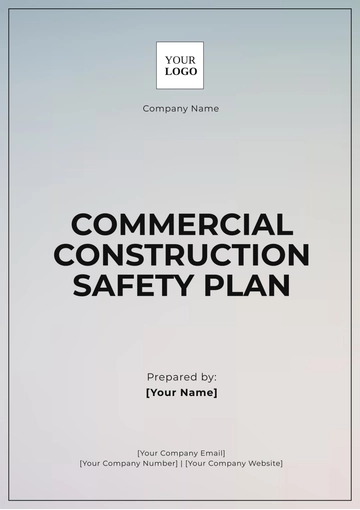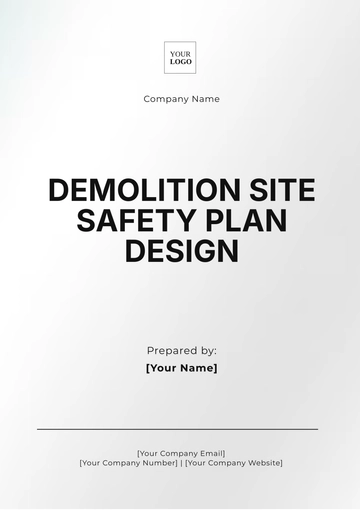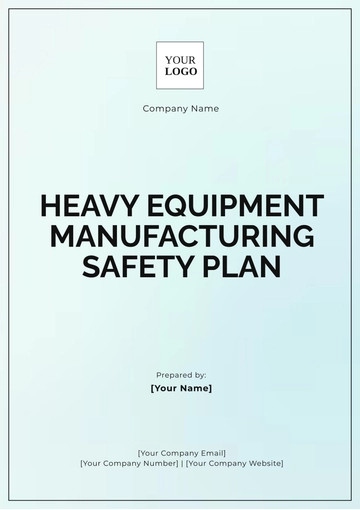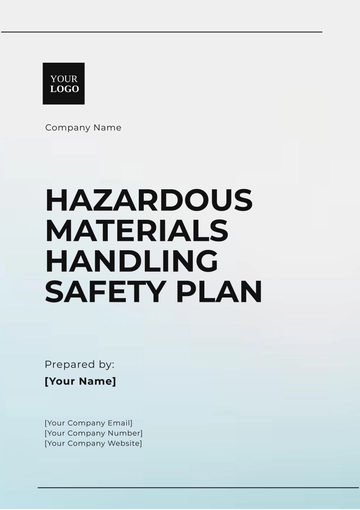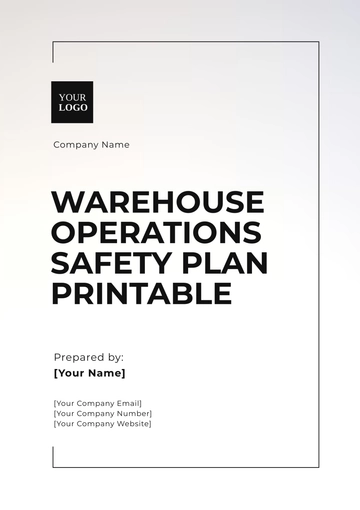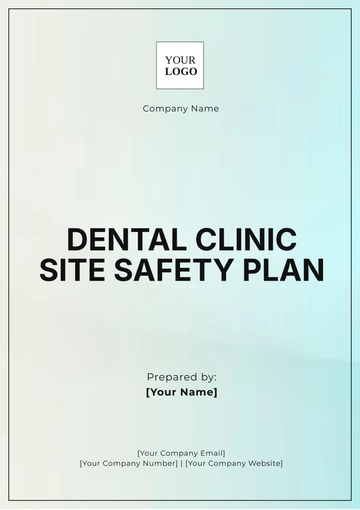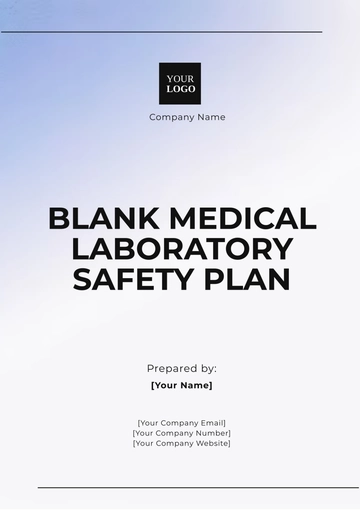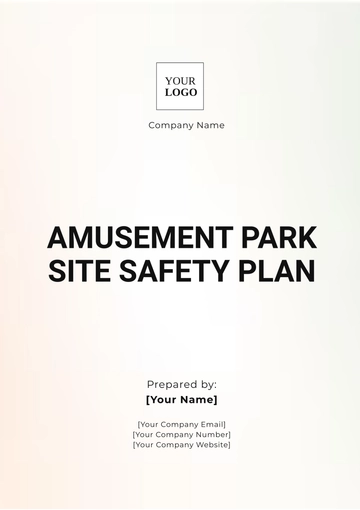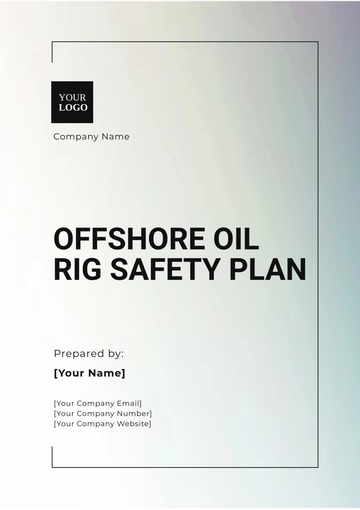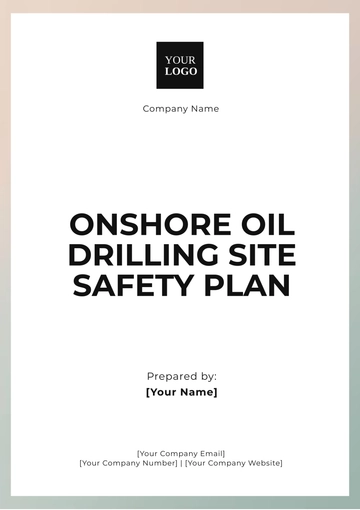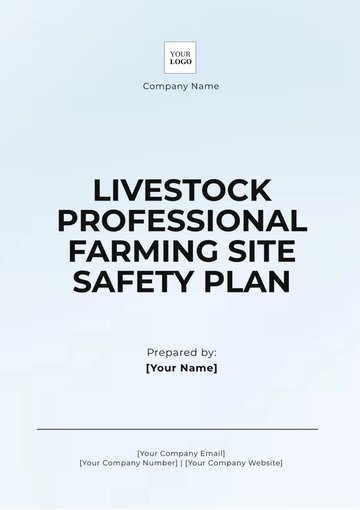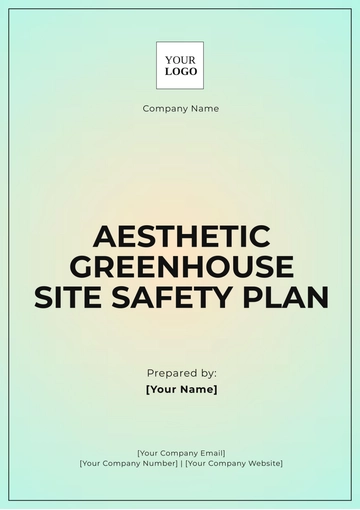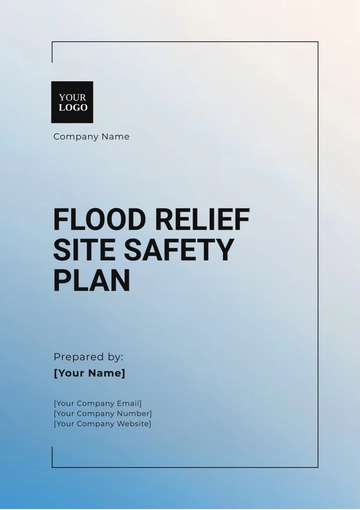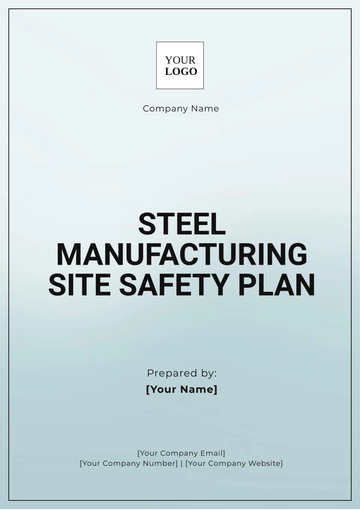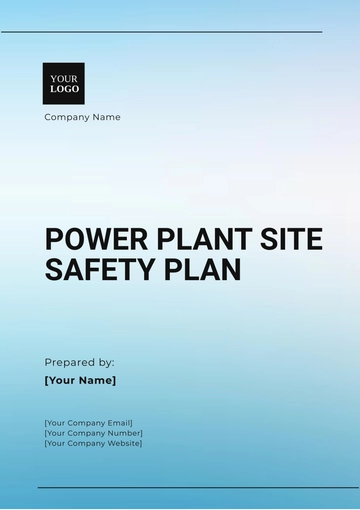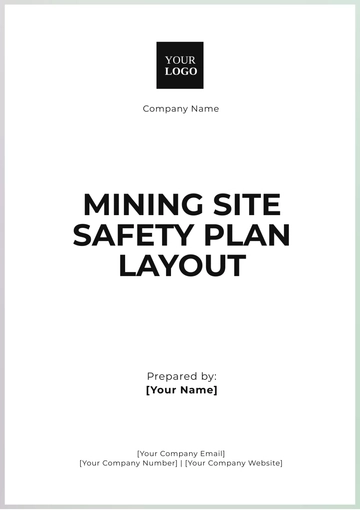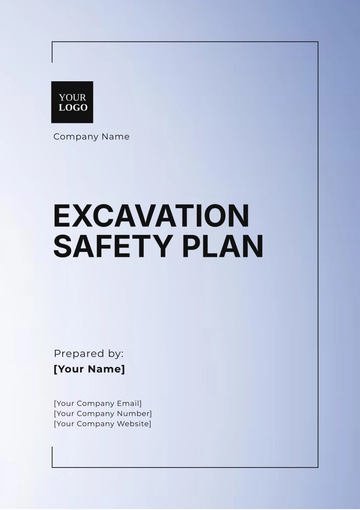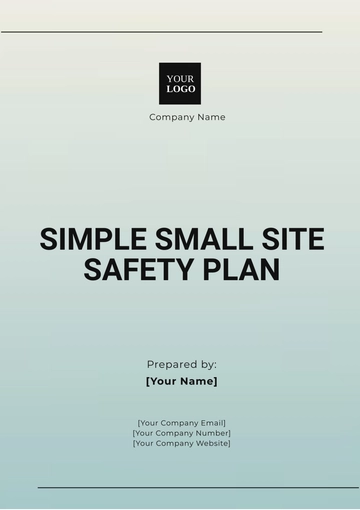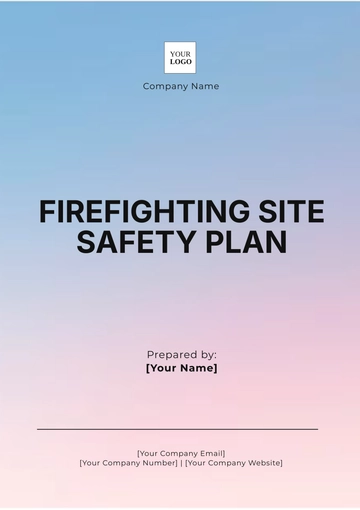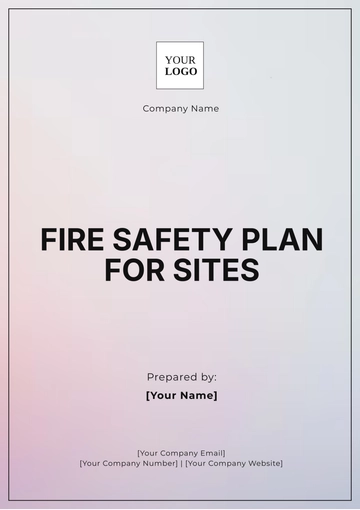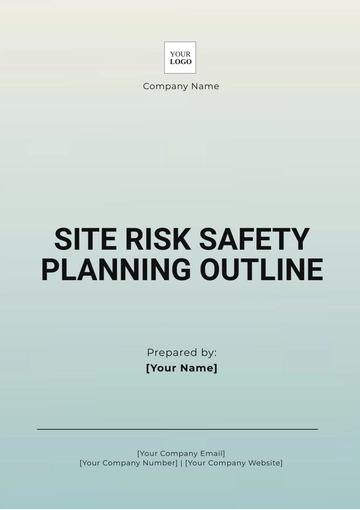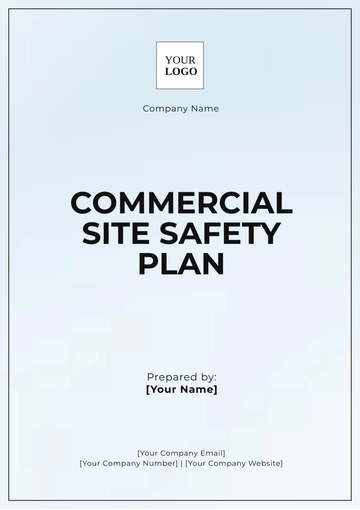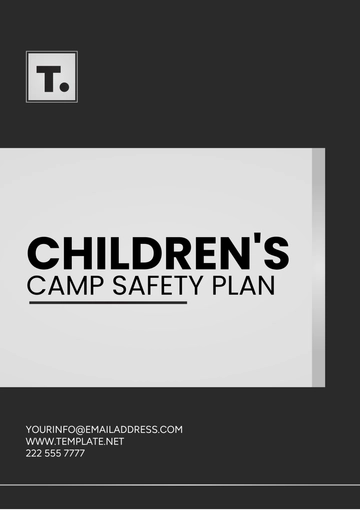Free High-Rise Construction Site Safety Plan
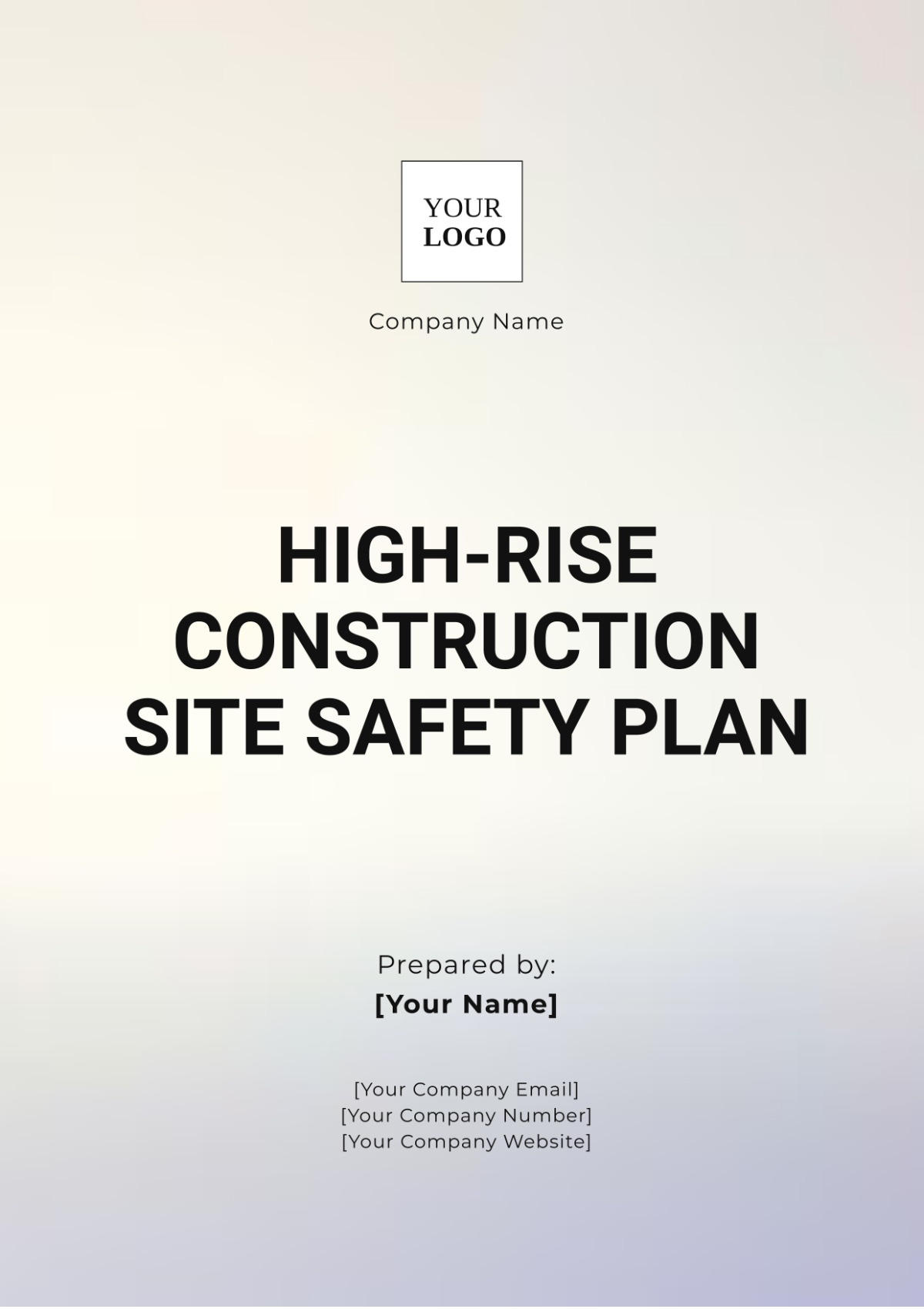
Project Name | Skyview Tower |
Location | Downtown, Cityville |
Date | September 26, 2050 |
Prepared by | [Your Name] |
Company Name | [Your Company Name] |
1. Introduction
The construction of high-rise buildings presents significant risks and hazards, including working at heights, material handling, and complex machinery operations. This comprehensive safety plan outlines the necessary protocols and procedures designed to ensure the safety of workers, residents, and the general public throughout the construction process.
2. Objective
The primary objective of this safety plan is to minimize accidents and injuries by establishing a safe work environment through strict enforcement of safety standards and regulations. Key goals include:
Achieving zero accidents on-site.
Ensuring compliance with OSHA regulations and local building codes.
Promoting a safety-first culture among all personnel.
3. Safety Roles and Responsibilities
Site Safety Manager: Responsible for overseeing safety operations, conducting briefings, and ensuring compliance with regulations.
Employees: Must adhere to safety guidelines, report hazards, and participate in training.
Contractors: Ensure worker training and compliance, and report safety concerns.
Emergency Response Team: Provides immediate assistance during emergencies and conducts drills.
4. Risk Assessment
Site Inspection: Regular inspections to identify hazards, conducted weekly and after significant events.
Hazard Identification: Documenting potential hazards such as falling objects and electrical issues.
Risk Mitigation Measures: Implementing barriers, safety nets, and clear signage to minimize risks.
5. Training and Education
Orientation: Mandatory safety orientation for all employees and contractors before starting work.
Ongoing Training: Monthly training sessions covering updated safety procedures and emergency protocols.
Specialized Training: Targeted training for specific tasks, such as operating heavy machinery or working at heights.
6. Emergency Preparedness
Emergency Procedures: Clearly defined and posted procedures for emergencies, including evacuation routes.
Drills: Regular emergency drills, including evacuation and first aid training, are conducted semi-annually.
Emergency Equipment: Monthly checks to ensure readiness of fire extinguishers, first aid kits, and communication devices.
7. Personal Protective Equipment (PPE)
PPE Requirement: All workers must wear appropriate PPE, including hard hats, safety glasses, gloves, and steel-toed boots.
PPE Maintenance: Regular inspections and immediate reporting of damaged or worn equipment are mandatory.
8. Monitoring, Reporting, and Documentation
To ensure a robust safety culture and continuous improvement, a systematic approach to monitoring and documentation will be established:
Incident Reporting: A formal system will be implemented to document all incidents and near misses. Reports must be completed within 24 hours of any incident, allowing for timely investigation and corrective action.
Monitoring: Safety performance will be continuously assessed through regular audits and inspections. Key safety metrics will be reviewed monthly to track compliance and identify areas for improvement.
Documentation and Record Keeping: All records related to safety training sessions, incident reports, inspection findings, and emergency drill outcomes will be meticulously maintained. These records will be stored electronically and backed up monthly to ensure accessibility, compliance, and the ability to track safety trends over time.
9. Review and Revision of the Safety Plan
The safety plan will undergo a comprehensive review every quarter and will be revised as necessary to reflect any operational changes, regulatory updates, or feedback from personnel. The goal is to prioritize continuous improvement in safety measures to enhance overall site safety.
10. Conclusion
In conclusion, a robust High-Rise Construction Site Safety Plan is vital for minimizing risks during the construction of high-rise buildings. By defining safety roles, conducting risk assessments, providing continuous training, and maintaining effective monitoring systems, we can ensure a safe work environment for workers, residents, and the public. Regular reviews and updates to the plan will help adapt to operational changes, fostering a culture of safety that prioritizes the well-being of all individuals involved and striving for zero accidents on-site.
- 100% Customizable, free editor
- Access 1 Million+ Templates, photo’s & graphics
- Download or share as a template
- Click and replace photos, graphics, text, backgrounds
- Resize, crop, AI write & more
- Access advanced editor
Ensure safety on your high-rise construction projects with the High-Rise Construction Site Safety Plan Template from Template.net. This editable and customizable template is crafted to address the unique challenges of high-rise construction. Easily adapt its content to fit your specific site conditions and safety regulations. With a clear structure and comprehensive guidelines, you can effectively communicate essential safety protocols to your team. Elevate your safety standards today!
You may also like
- Finance Plan
- Construction Plan
- Sales Plan
- Development Plan
- Career Plan
- Budget Plan
- HR Plan
- Education Plan
- Transition Plan
- Work Plan
- Training Plan
- Communication Plan
- Operation Plan
- Health And Safety Plan
- Strategy Plan
- Professional Development Plan
- Advertising Plan
- Risk Management Plan
- Restaurant Plan
- School Plan
- Nursing Home Patient Care Plan
- Nursing Care Plan
- Plan Event
- Startup Plan
- Social Media Plan
- Staffing Plan
- Annual Plan
- Content Plan
- Payment Plan
- Implementation Plan
- Hotel Plan
- Workout Plan
- Accounting Plan
- Campaign Plan
- Essay Plan
- 30 60 90 Day Plan
- Research Plan
- Recruitment Plan
- 90 Day Plan
- Quarterly Plan
- Emergency Plan
- 5 Year Plan
- Gym Plan
- Personal Plan
- IT and Software Plan
- Treatment Plan
- Real Estate Plan
- Law Firm Plan
- Healthcare Plan
- Improvement Plan
- Media Plan
- 5 Year Business Plan
- Learning Plan
- Marketing Campaign Plan
- Travel Agency Plan
- Cleaning Services Plan
- Interior Design Plan
- Performance Plan
- PR Plan
- Birth Plan
- Life Plan
- SEO Plan
- Disaster Recovery Plan
- Continuity Plan
- Launch Plan
- Legal Plan
- Behavior Plan
- Performance Improvement Plan
- Salon Plan
- Security Plan
- Security Management Plan
- Employee Development Plan
- Quality Plan
- Service Improvement Plan
- Growth Plan
- Incident Response Plan
- Basketball Plan
- Emergency Action Plan
- Product Launch Plan
- Spa Plan
- Employee Training Plan
- Data Analysis Plan
- Employee Action Plan
- Territory Plan
- Audit Plan
- Classroom Plan
- Activity Plan
- Parenting Plan
- Care Plan
- Project Execution Plan
- Exercise Plan
- Internship Plan
- Software Development Plan
- Continuous Improvement Plan
- Leave Plan
- 90 Day Sales Plan
- Advertising Agency Plan
- Employee Transition Plan
- Smart Action Plan
- Workplace Safety Plan
- Behavior Change Plan
- Contingency Plan
- Continuity of Operations Plan
- Health Plan
- Quality Control Plan
- Self Plan
- Sports Development Plan
- Change Management Plan
- Ecommerce Plan
- Personal Financial Plan
- Process Improvement Plan
- 30-60-90 Day Sales Plan
- Crisis Management Plan
- Engagement Plan
- Execution Plan
- Pandemic Plan
- Quality Assurance Plan
- Service Continuity Plan
- Agile Project Plan
- Fundraising Plan
- Job Transition Plan
- Asset Maintenance Plan
- Maintenance Plan
- Software Test Plan
- Staff Training and Development Plan
- 3 Year Plan
- Brand Activation Plan
- Release Plan
- Resource Plan
- Risk Mitigation Plan
- Teacher Plan
- 30 60 90 Day Plan for New Manager
- Food Safety Plan
- Food Truck Plan
- Hiring Plan
- Quality Management Plan
- Wellness Plan
- Behavior Intervention Plan
- Bonus Plan
- Investment Plan
- Maternity Leave Plan
- Pandemic Response Plan
- Succession Planning
- Coaching Plan
- Configuration Management Plan
- Remote Work Plan
- Self Care Plan
- Teaching Plan
- 100-Day Plan
- HACCP Plan
- Student Plan
- Sustainability Plan
- 30 60 90 Day Plan for Interview
- Access Plan
- Site Specific Safety Plan
